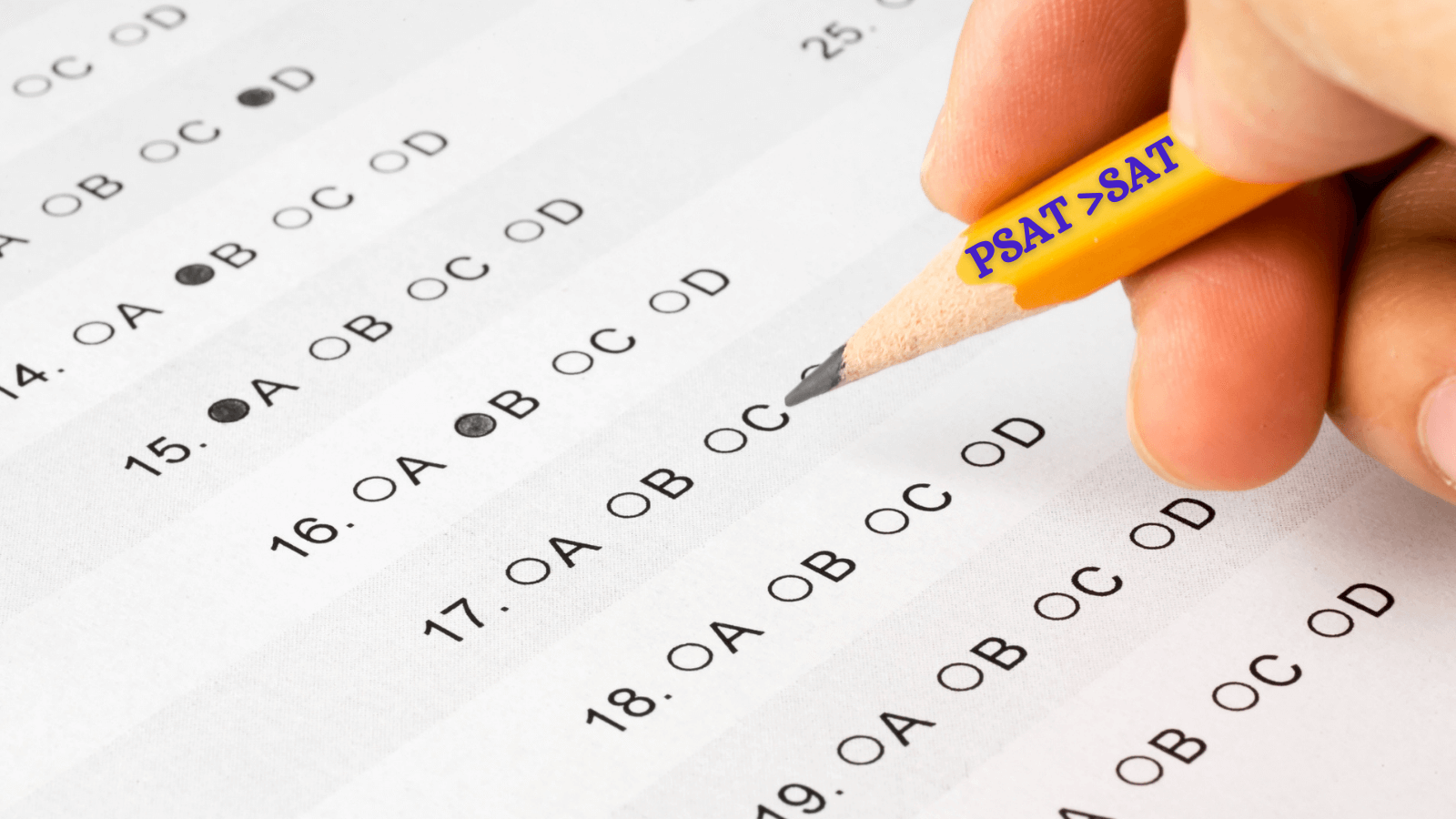Student-centric advice and objective recommendations
Higher education has never been more confusing or expensive. Our goal is to help you navigate the very big decisions related to higher ed with objective information and expert advice. Each piece of content on the site is original, based on extensive research, and reviewed by multiple editors, including a subject matter expert. This ensures that all of our content is up-to-date, useful, accurate, and thorough.
Our reviews and recommendations are based on extensive research, testing, and feedback. We may receive commission from links on our website, but that doesn’t affect our editors’ opinions. Our marketing partners don’t review, approve or endorse our editorial content. It’s accurate to the best of our knowledge when posted. You can find a complete list of our partners here.
SAT Score Release Schedule
 By
Lisa Freedland
By
Lisa Freedland 
Lisa Freedland is a Scholarships360 writer with personal experience in psychological research and content writing. She has written content for an online fact-checking organization and has conducted research at the University of Southern California as well as the University of California, Irvine. Lisa graduated from the University of Southern California in Fall 2021 with a degree in Psychology.
Full BioLearn about our editorial policies

Maria Geiger is Director of Content at Scholarships360. She is a former online educational technology instructor and adjunct writing instructor. In addition to education reform, Maria’s interests include viewpoint diversity, blended/flipped learning, digital communication, and integrating media/web tools into the curriculum to better facilitate student engagement. Maria earned both a B.A. and an M.A. in English Literature from Monmouth University, an M. Ed. in Education from Monmouth University, and a Virtual Online Teaching Certificate (VOLT) from the University of Pennsylvania.
Full BioLearn about our editorial policies

Waiting for test results can be agonizing, but is especially so for the SAT. However, knowing your scores as soon as possible can help you plan your next steps (e.g. should you retake the exam, or are your scores ready to be sent off?). To help you out, we’ve listed out this year’s SAT score release schedule.
Keep on reading to find out when SAT scores are released, how you can access them, and what you should do after you receive your scores.
Don’t miss: Scholarships360’s free scholarship search tool
How long does it take to get your SAT scores?
Typically, SAT scores are released online 14 days after a given test date. As SAT exams are administered on Saturdays, this would mean that you’d receive your score the second Saturday after your test date.
However, if you took your SAT during one of the SAT School Days, you can expect your scores a little later – between 3 and 4 weeks after your test date. Similarly, if you take the SAT during the summer, prepare to wait a little longer than normal. For summer SAT exams, scores typically come out 5 weeks after one’s testing date.
So, that’s all good to know, but when exactly do scores come out for each date? Let’s see!
2024-2025 SAT score release dates
Following is the full schedule for students taking the SAT after March 2024 (which have been confirmed by the College Board!):
| Test Date | Score Release Date | |
| March 9, 2024 | March 22, 2024 | |
| May 4, 2024 | May 17, 2024 | |
| June 1, 2024 | June 14, 2024 | |
SAT school day score release dates
For those of you taking the SAT at school, here is the full schedule for the SAT School Day test dates (for the 2024-2025 academic year):
| Test Date | Most scores available | |
| March 4-15, 2024 | April 4, 2024 | |
| March 18-29, 2024 | April 18, 2024 | |
| April 1-12, 2024 | May 2, 2024 | |
| April 15-16, 2024 | May 16, 2024 |
How can I access my SAT scores?
You now know the general logic for when SAT scores are released (no matter what day you’re taking it), but how can you access your scores? Great question!
Simply, to access one’s SAT scores, one should go onto College Board’s Student Score Reports page. Enter your account info, and you should be able to access them from there. If it is not directing you to your scores, you can also go to the College Board homepage, click on “My SAT,” and you should be taken to a page with your SAT scores from each time you’ve taken the exam.
As the College Board requires students to have a College Board account to register for the SAT, you likely already have one (if you’ve taken the exam before). On the other hand, if you have not yet registered for the exam and are just looking to the future, we highly recommend you create your own College Board account!
And, if you’re running into any other sort of problem while accessing your scores, we would definitely recommend checking out the College Board’s very own getting your SAT scores guide. While SAT scores are typically released by 5 am EST (or 2 am PST) on the scheduled score release date, these times may vary by one’s account and test date. So, if your scores are not yet up (on the scheduled score release date), they likely will be a little later in the day! We recommend not worrying too much about when exactly your scores come out and checking at your leisure.
When will colleges receive my score reports?
With all that said, when do colleges typically receive student’s score reports? Well, if you’ve put down a university to receive one of your four free score reports, then the school should receive your scores within 10 days of them being released online.
But what exactly is a free SAT score report? Well, the College Board allows you to automatically send your SAT scores to four different colleges – instead of paying the typical $12 fee per school. So, any of the score reports you send through this free service are considered “free” score reports! You’ll be able to indicate which four schools to send these reports to when registering for the exam, if you choose to use the service.
Paid score reports
For those schools that don’t receive one of your free score reports, however, you’ll have to send them your SAT scores separately. Typically, these additional score reports cost $12 each and will take between one and two weeks to be sent to colleges. However, if you’re especially concerned about sending your scores in on time, you can also use the College Board’s “Rush Reporting” service. This service costs $31 per score report rather than the typical $12 but will send your score reports within one to two business days. Due to the large extra fee for rush reporting, however, we would probably not recommend using it unless your deadline is very, very close (less than 2 or 3 weeks away!).
With that said, if you anticipate you’ll need help paying to send your SAT scores to schools (or need help paying for the exam itself), we highly recommend looking into the College Board’s SAT fee waivers! And, if you’re interested, there are also college application fee waivers available for those who qualify (be sure to check out how to get a college application fee waiver!).
What should I do after I receive my SAT score?
Once you receive your SAT score, and depending on what you think of it, there’s a few steps that you can take next. But, first, how do you know if your SAT score is “good”?
Well, it’s first important to consider that “good” is subjective and will be entirely dependent on what types of schools you’re applying to. Ideally, however, students should aim for a score between the 25th and 75th percentile of the schools they’re applying to. For more information on what this means (and for help interpreting your score, amongst other things), be sure to learn about what a high SAT score is.
For now, though, let’s take a look at some options you have once you receive your score.
Should you send your SAT score to test-optional schools?
More and more colleges and universities are becoming test-optional which means they do not require students to send in standardized test scores such as SAT scores in order to apply and be admitted to their school. Test-optional policies are becoming increasingly popular. So, should you send your SAT score to these test-optional schools?
Ultimately, the decision to submit SAT scores to a test-optional school should be based on your individual circumstances and careful assessment of how your application would be affected. You should consider the following to help you determine whether or not to submit an SAT score:
- If your SAT scores are strong, submitting them could strengthen your application! However, if your scores are below average or you believe they do not accurately reflect your abilities, you may choose not to submit them.
- If your application is well-rounded and strong in other areas such as extracurricular activities and letters of recommendation, not submitting SAT scores may not hurt your chances of admission.
- Research the schools test-optional policy! Some schools truly do not consider the SAT however some may still consider your score if you submit it.
- Check if the school offers merit-based scholarships that are tied to SAT scores. Sometimes, submitting a good SAT score can increase your eligibility for scholarships!
- Think about your personal preference! If you are confident in your test scores then submit them!
Also see: SAT/ACT scores: to send or not to send?
Low score? Consider retesting!
If you weren’t particularly happy with your score or didn’t score between the 25th and 75th percentile for your dream college, you may want to consider retaking the exam.
However, according to the College Board, while many students do perform better the second time around, many also have their scores stay the same or drop. Thus, if students wish to score higher on their second SAT exam, we highly recommend that they study effectively and consistently. And, since you’ve already taken the exam at this point, you likely know what you performed well on, and what you didn’t. So, we would highly recommend focusing in and practicing those areas or topics you struggled with, to make sure you have a handle on them the second time around.
If you’re looking for some great SAT practice resources, check out these:
- Khan Academy official SAT practice
- College Board SAT practice tests
- PSAT to SAT score conversion
- How to choose the best test prep tutor
Alternatively, maybe you need some general tips on improving your score, or think that test anxiety is hindering your ability to perform your best. If so, be sure to check out these helpful articles:
Happy with your score? Send it to colleges!
Last, but certainly not least, if you’re happy with your score, feel free to send it off to colleges! We briefly went over this before, but if you need a little refresher, be sure to check out the College Board’s how to send SAT scores.
With that, we wish you the best of luck, and send you off. We hope you get into the college(s) of your dreams!
Frequently asked questions about the SAT score release schedule
What if I don’t see my scores on the expected release date?
”Can
How are SAT scores sent to colleges and universities?
How long at SAT scores valid?




 SAT" printed on his pencil">
SAT" printed on his pencil">
